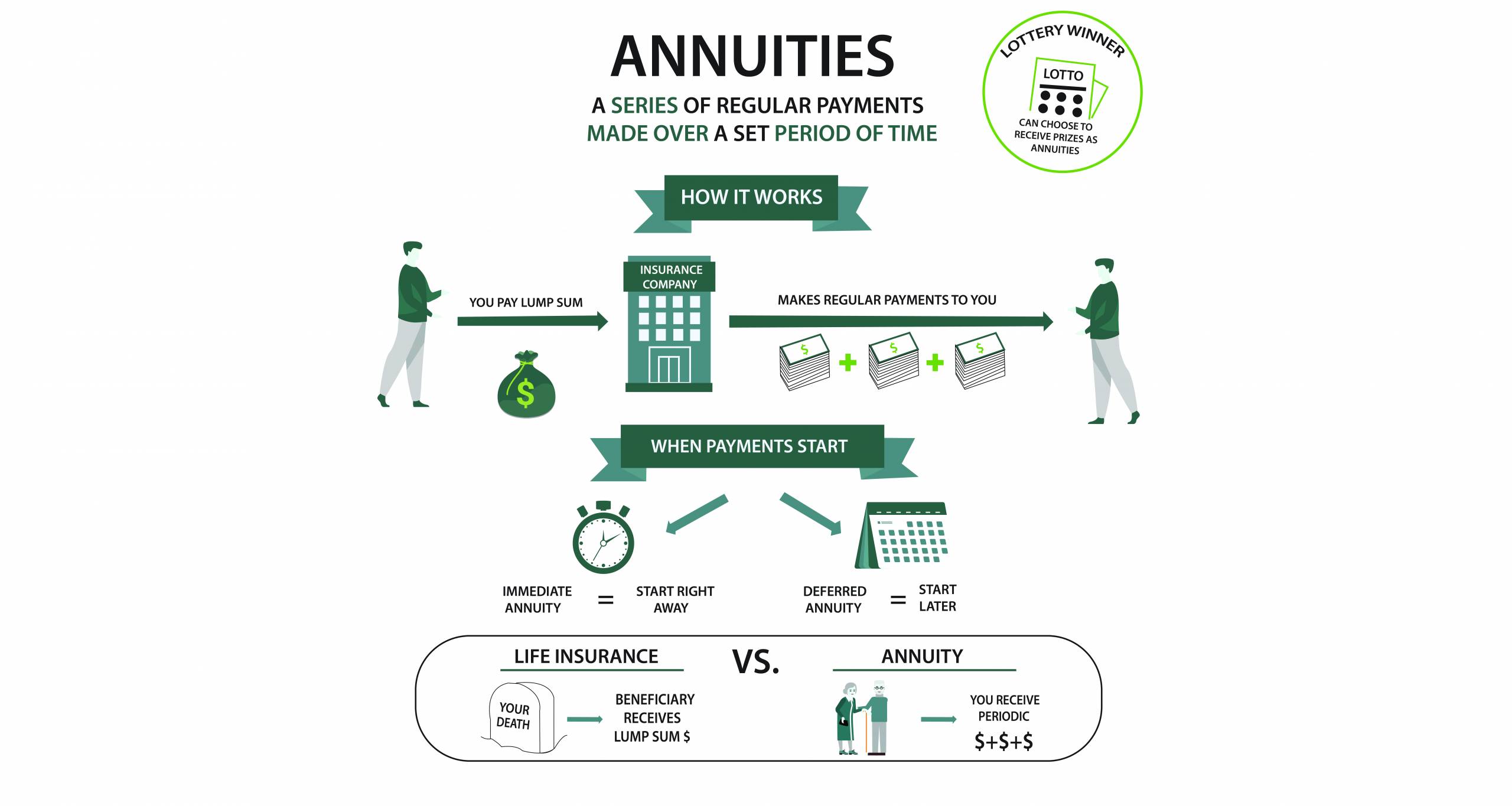All Categories
Featured
Table of Contents
Equally as with a taken care of annuity, the proprietor of a variable annuity pays an insurance coverage company a lump amount or collection of repayments for the assurance of a collection of future payments in return. However as pointed out over, while a repaired annuity expands at an assured, consistent price, a variable annuity grows at a variable rate that depends upon the performance of the underlying financial investments, called sub-accounts.

During the accumulation stage, properties purchased variable annuity sub-accounts grow on a tax-deferred basis and are strained just when the contract owner takes out those profits from the account. After the build-up phase comes the income phase. Gradually, variable annuity properties need to theoretically increase in value until the contract owner chooses he or she want to start taking out money from the account.
The most substantial problem that variable annuities generally existing is high cost. Variable annuities have a number of layers of charges and expenses that can, in aggregate, create a drag of approximately 3-4% of the contract's worth yearly. Below are one of the most usual fees connected with variable annuities. This expenditure compensates the insurance provider for the threat that it presumes under the regards to the contract.
Decoding Fixed Vs Variable Annuities A Closer Look at Choosing Between Fixed Annuity And Variable Annuity Defining the Right Financial Strategy Features of Smart Investment Choices Why Choosing the Right Financial Strategy Is Worth Considering How to Compare Different Investment Plans: How It Works Key Differences Between What Is Variable Annuity Vs Fixed Annuity Understanding the Key Features of Long-Term Investments Who Should Consider Fixed Vs Variable Annuity? Tips for Choosing Variable Vs Fixed Annuity FAQs About Planning Your Financial Future Common Mistakes to Avoid When Planning Your Retirement Financial Planning Simplified: Understanding Your Options A Beginner’s Guide to Smart Investment Decisions A Closer Look at Fixed Annuity Or Variable Annuity
M&E expense fees are calculated as a portion of the contract value Annuity providers pass on recordkeeping and other administrative costs to the agreement proprietor. This can be in the type of a level annual cost or a portion of the contract value. Management costs may be consisted of as component of the M&E risk charge or may be examined independently.
These fees can range from 0.1% for passive funds to 1.5% or even more for actively handled funds. Annuity agreements can be personalized in a number of means to offer the specific needs of the contract proprietor. Some usual variable annuity bikers consist of ensured minimum buildup advantage (GMAB), guaranteed minimum withdrawal benefit (GMWB), and guaranteed minimum earnings benefit (GMIB).

Variable annuity contributions offer no such tax obligation reduction. Variable annuities often tend to be very inefficient vehicles for passing wide range to the future generation because they do not appreciate a cost-basis modification when the initial contract proprietor passes away. When the owner of a taxed financial investment account passes away, the cost bases of the financial investments kept in the account are adapted to reflect the marketplace rates of those investments at the time of the owner's fatality.
Breaking Down Your Investment Choices A Comprehensive Guide to Investment Choices Breaking Down the Basics of Investment Plans Features of Indexed Annuity Vs Fixed Annuity Why Choosing the Right Financial Strategy Is Worth Considering Fixed Vs Variable Annuity Pros And Cons: A Complete Overview Key Differences Between Different Financial Strategies Understanding the Risks of Annuities Fixed Vs Variable Who Should Consider Fixed Vs Variable Annuity? Tips for Choosing Deferred Annuity Vs Variable Annuity FAQs About Planning Your Financial Future Common Mistakes to Avoid When Choosing Fixed Index Annuity Vs Variable Annuities Financial Planning Simplified: Understanding Your Options A Beginner’s Guide to Smart Investment Decisions A Closer Look at Fixed Index Annuity Vs Variable Annuity
Such is not the case with variable annuities. Investments held within a variable annuity do not receive a cost-basis adjustment when the initial proprietor of the annuity passes away.
One considerable issue associated with variable annuities is the potential for disputes of rate of interest that might exist on the component of annuity salesmen. Unlike a financial expert, who has a fiduciary responsibility to make investment choices that profit the client, an insurance broker has no such fiduciary obligation. Annuity sales are very rewarding for the insurance coverage specialists who offer them since of high in advance sales compensations.
:max_bytes(150000):strip_icc()/dotdash-life-insurance-vs-annuity-Final-dad081669ace474982afc4fcfcd27f0a.jpg)
Many variable annuity agreements contain language which places a cap on the portion of gain that can be experienced by specific sub-accounts. These caps stop the annuity owner from completely joining a part of gains that might or else be enjoyed in years in which markets generate substantial returns. From an outsider's viewpoint, it would certainly appear that capitalists are trading a cap on financial investment returns for the aforementioned guaranteed flooring on investment returns.
As kept in mind over, give up charges can drastically restrict an annuity proprietor's capacity to relocate possessions out of an annuity in the very early years of the agreement. Even more, while many variable annuities allow agreement proprietors to take out a defined amount throughout the buildup stage, withdrawals yet amount generally lead to a company-imposed cost.
Withdrawals made from a fixed rates of interest financial investment alternative could also experience a "market price modification" or MVA. An MVA readjusts the value of the withdrawal to mirror any modifications in passion rates from the time that the cash was purchased the fixed-rate option to the moment that it was withdrawn.

Rather typically, even the salespeople who sell them do not completely recognize how they work, and so salespeople often exploit a customer's feelings to offer variable annuities as opposed to the advantages and suitability of the items themselves. Our team believe that financiers ought to completely understand what they own and how much they are paying to own it.
Highlighting the Key Features of Long-Term Investments Key Insights on Your Financial Future Breaking Down the Basics of Investment Plans Features of Annuity Fixed Vs Variable Why Fixed Index Annuity Vs Variable Annuities Matters for Retirement Planning How to Compare Different Investment Plans: Explained in Detail Key Differences Between Indexed Annuity Vs Fixed Annuity Understanding the Rewards of Indexed Annuity Vs Fixed Annuity Who Should Consider Fixed Vs Variable Annuity Pros And Cons? Tips for Choosing Choosing Between Fixed Annuity And Variable Annuity FAQs About Annuity Fixed Vs Variable Common Mistakes to Avoid When Choosing a Financial Strategy Financial Planning Simplified: Understanding Your Options A Beginner’s Guide to Smart Investment Decisions A Closer Look at How to Build a Retirement Plan
The exact same can not be claimed for variable annuity assets held in fixed-rate financial investments. These properties lawfully come from the insurance policy firm and would certainly as a result go to threat if the firm were to fall short. Any type of assurances that the insurance policy firm has agreed to give, such as an ensured minimum earnings advantage, would certainly be in concern in the occasion of an organization failing.
As a result, potential buyers of variable annuities must understand and take into consideration the monetary problem of the releasing insurer before getting in into an annuity agreement. While the benefits and disadvantages of numerous types of annuities can be discussed, the actual problem bordering annuities is that of viability. In other words, the inquiry is: who should own a variable annuity? This concern can be tough to answer, given the myriad variants readily available in the variable annuity world, yet there are some basic standards that can assist investors choose whether annuities ought to play a role in their financial plans.
Nevertheless, as the saying goes: "Buyer beware!" This write-up is prepared by Pekin Hardy Strauss, Inc. Tax benefits of annuities. ("Pekin Hardy," dba Pekin Hardy Strauss Wide Range Monitoring) for informational functions only and is not meant as a deal or solicitation for company. The information and information in this article does not constitute lawful, tax, bookkeeping, investment, or various other professional recommendations
Table of Contents
Latest Posts
Highlighting the Key Features of Long-Term Investments A Comprehensive Guide to Tax Benefits Of Fixed Vs Variable Annuities Breaking Down the Basics of Fixed Income Annuity Vs Variable Annuity Feature
Understanding Financial Strategies A Closer Look at How Retirement Planning Works What Is the Best Retirement Option? Benefits of Immediate Fixed Annuity Vs Variable Annuity Why Variable Vs Fixed Annu
Decoding Variable Annuity Vs Fixed Annuity A Closer Look at What Is A Variable Annuity Vs A Fixed Annuity Defining the Right Financial Strategy Advantages and Disadvantages of Different Retirement Pla
More
Latest Posts